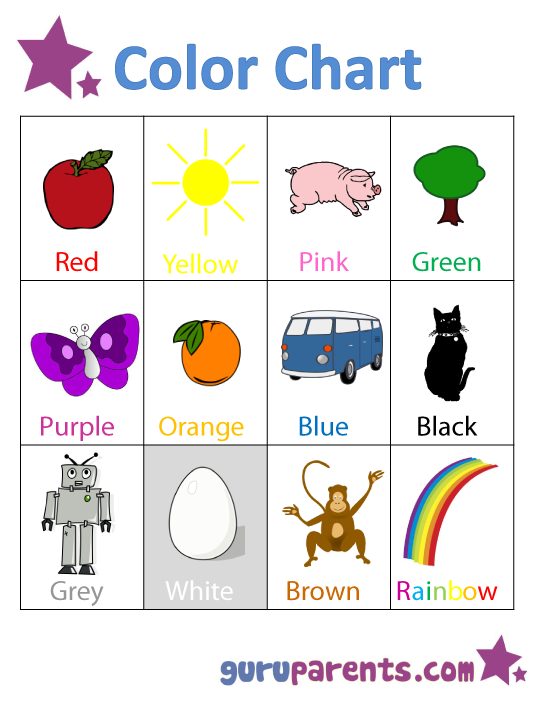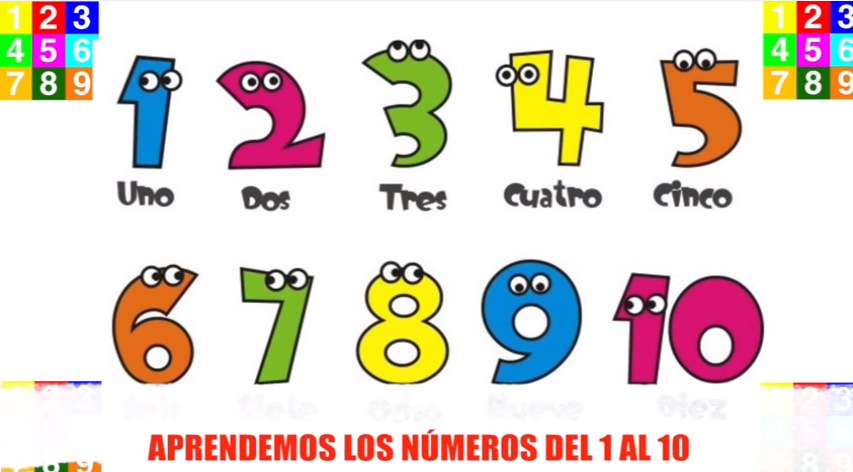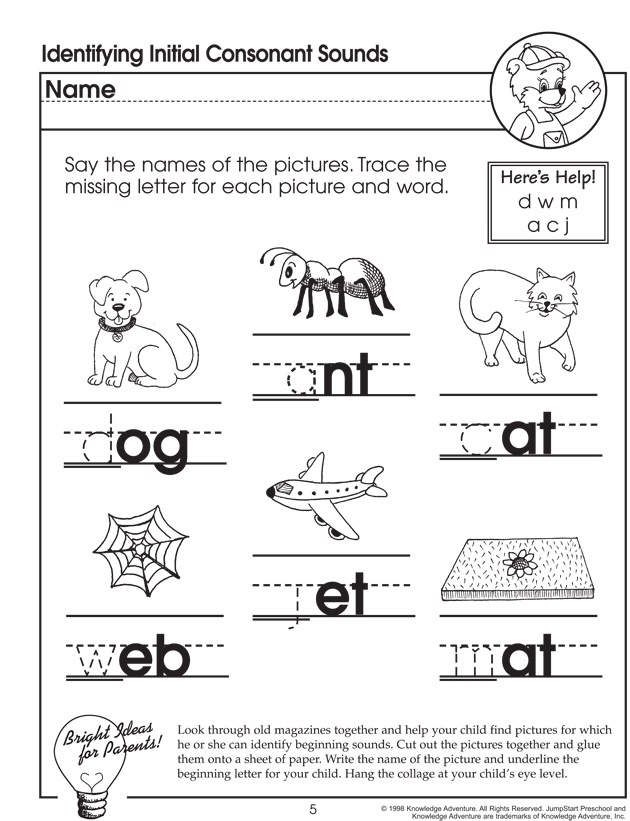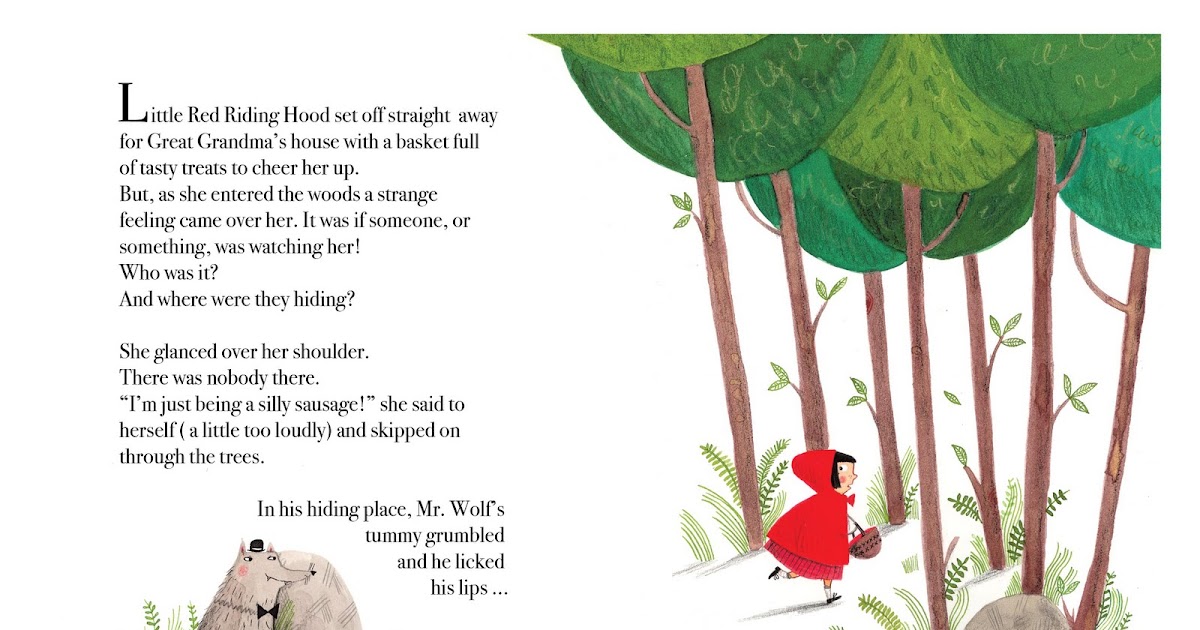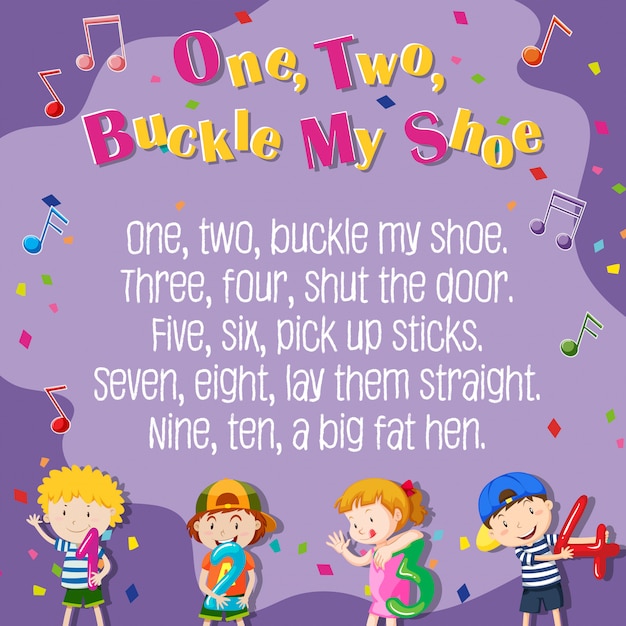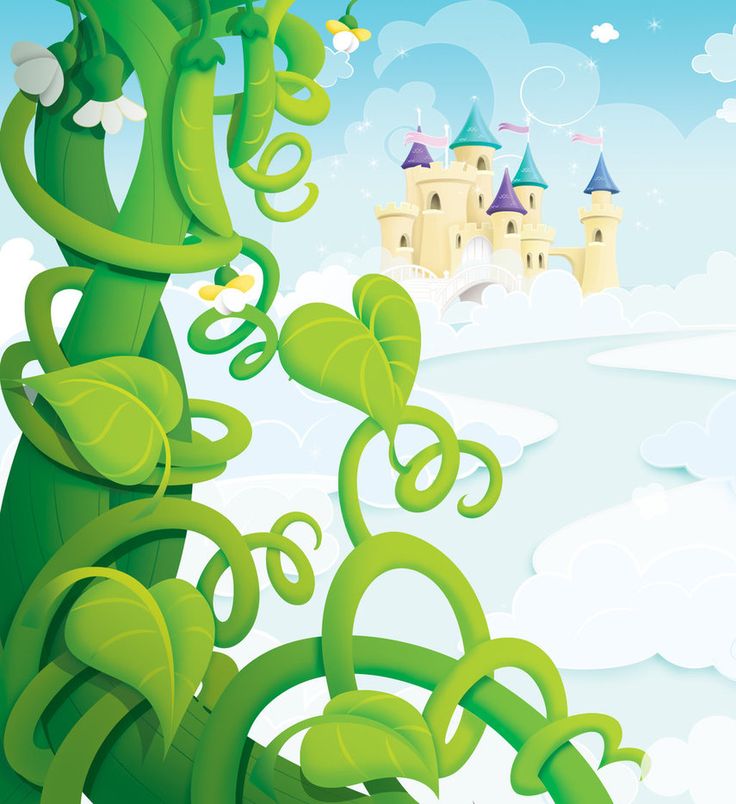Colors for kids learn
When Do Toddlers Learn Color? Questions Answered
Here’s a fun fact: Toddlers learn best during fun and play! Teaching colors can also be fun and interactive. Toddlers are naturally attracted to bright colors and teaching them how to recognize these colors can be effortless. This article will serve as an easy guide on how you can help your little ones learn and identify basic colors and shapes.
Image from Piqsels
When Do Toddlers Learn Colors
According to the American Optometric Association, an infant’s vision can significantly improve during the first few months after birth. Babies can already see shades of black, white, and gray while color vision will start to develop at around 4 months.
Depth perception will start developing after 5 months where your baby can see more clearly and follow movements with their eyes.
At 2 years of age, your child’s in-depth perception and eye-hand coordination should already be well developed. Children at this age are always on the move. Their curious little minds make them highly interested in looking around and exploring their environment. This is one of the best times to let them start learning colors and basic shapes.
Issues Toddlers Encounter When Learning Colors
Some children identify colors faster than others and some can identify only one or two. The rate of how fast kids learn multiple colors varies on their developmental stage. Frequent exposures through fun activities and color games can help strengthen your child’s color recognition skills.
Though learning colors may not be bright and sunny at all times. Parents encounter a lot of issues that hinder their child’s ability to tell color differences. For example, by presenting the same objects for color reference the child would likely associate those objects with their color name. For a child to be able to develop the ability to discern colors from the same object will take time and patience.
Developmental Issues in Learning Colors
Most children get confused with the different color shades at first, that is normal, you can’t expect every child to get it right the first time.
But in cases like, when your child is having difficulty verbally communicating the color names even if they know it or having trouble recognizing the green ball from the red one, aside from other colors, then they might be experiencing some developmental issues.
There are a lot of developmental concerns that can delay a child’s pattern of development. Color blindness, for one, can prevent the child from learning certain colors. Autism is another factor that can cause a developmental delay in learning shapes and color
Different Facets of Learning Shapes and Colors
For your little ones to be able to grasp the basic concept of color and recognize a shape is a developmental milestone. It is an age-specific task that young children can accomplish at a certain age.
We are living in a world filled with different colors that our children can see every day. From the blue sky to the green grass and a red ball in the backyard, your kids should be able to distinguish which color is which.
Allowing your child to be aware of the colors in their surroundings is understanding how important it is for them to understand the different aspects of learning colors.
Tips on How to Teach Colors and Basic Shapes to Toddlers
A toddler’s brain is like a sponge, they are ready to absorb everything that is going on around them. For them, the world is a big classroom. It is the perfect time for them to master foundations for future skills.
There are a lot of different ways that you can come up with creative ideas to help your child enjoy while learning. From indoor to outdoor activities to fun and games, the sky’s the limit. Here are some tips on how you can help your child learn the simplest forms of learning shapes and colors:
Related Read: How Can a Teacher Best Help My Child?
Try to Engage Them Is Simple Activities Like Painting and Color Matching
Trying to match the colors, like putting the blue block beside the blue shirt is one of the simplest ways to learn color matching. Aside from practicing their fine motor skills, it enhances their ability to recognize colors.
Aside from practicing their fine motor skills, it enhances their ability to recognize colors.
The idea of using colorful objects to help learn the primary colors is both fun and effective when dealing with toddlers.
Great Activity: 10 Cinco De Mayo Art Projects for Preschoolers to Celebrate Mexican Culture!
Painting is another creative and fun activity to help kids learn colors and shapes. Painting helps a toddler explore color mixing. It can be a little messy, but using washable paints can give your child the freedom to discover new colors on their own by mixing paints.
Image from PxHere
Same Color Games With Colorful Objects
Activities such as sorting red blocks from blue ones are also a fun way of encouraging the cognitive way of color sorting. You can also use flashcards or ask them to find objects around that house of the same color. Place down a colored paper on the table and let your child match it with the same colored block.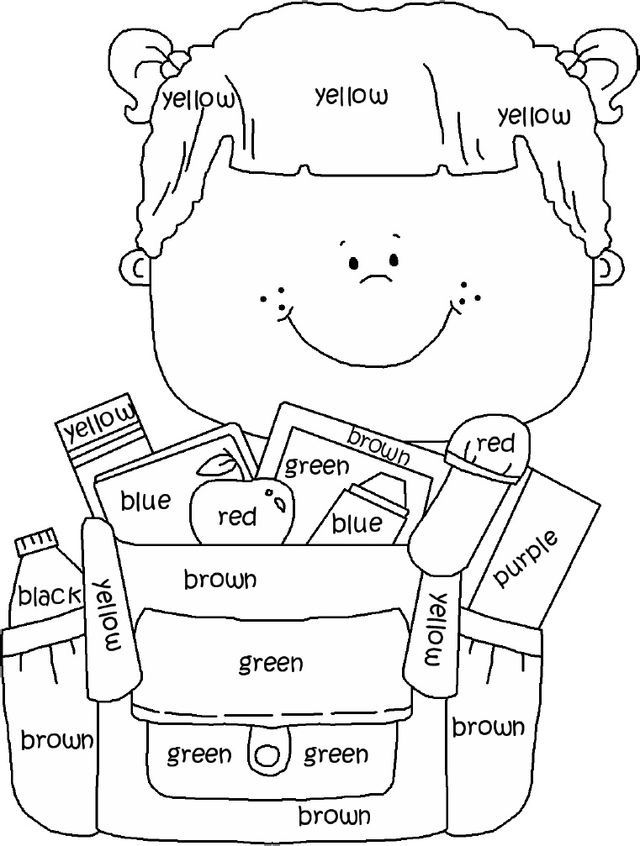
These kinds of activities can stimulate and reinforce your child’s mind to know the differences between various colors and objects they are trying to match. Color learning can also be a great way for parent and child bonding.
Learning perception is different between kids and adults. Kids mostly learn through association. Using colorful objects and associating them with different color names can be the best way to help them learn colors faster.
Engage Them With Coloring Activities
Color activities such as coloring books and color words are fun ways to keep them busy and occupied. Plus, it helps with color learning.
These types of activities can stimulate their creativity and also be an exciting way to introduce colors. Coloring materials can also foster their awareness of the different colors that they can use to color the whole image.
Allowing your child to take part in such activities can also strengthen their ability to focus, coordinate and cultivate their hidden creative talents. Letting them complete their coloring tasks can boost their self-esteem and sense of accomplishment.
Letting them complete their coloring tasks can boost their self-esteem and sense of accomplishment.
Related Read: How to Color Easter Eggs with Food Coloring & Natural Dyes
The Best Time Teach Shapes for Most Children
Most toddlers begin identifying primary colors at the age of 2 years old. But, naming shapes is a type of skill that might take a little longer to develop for some kids. Generally, at the age of 3, many children can already identify some of the more advanced shapes.
Common shapes such as squares, rectangles, triangles, and circles should already be recognized by toddlers aged 2 years old and above. It can be easily reinforced by pointing out objects inside the home that are shaped the same.
The Best Age for Toddlers to Learn the Alphabet
Learning the alphabet is another educational milestone that will prepare them in learning how to write and read in the future. Usually, young children should be able to recognize the alphabet at the age of three.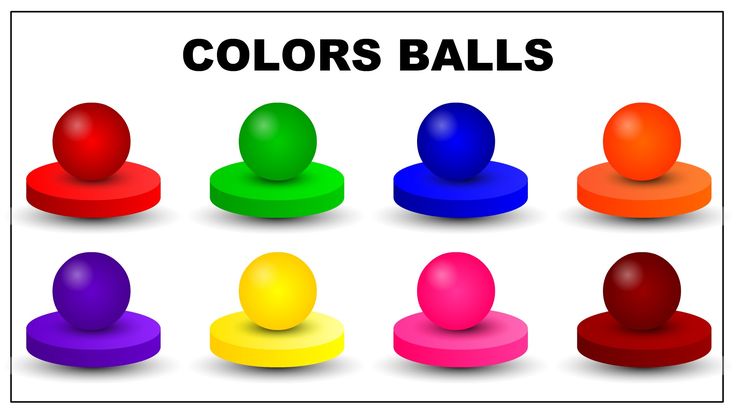
Though some will need more time to learn it, you can always help your child gain competency by teaching and encouraging them to sing the alphabet song daily. Colorful alphabet books and other visual aids can also make your child’s learning experience with letters fun and interactive.
Best Time for Toddlers to Start Learning Numbers
Introducing number recognition to toddlers is important to help them understand the concept of counting. Some children start counting from one to ten at the age of two. Though they can’t understand the concept, they can learn it through repetition.
Letting them count common objects that they can see around them is a great activity to exercise their mind. Kids learn faster if the topic interests them and using fascinating objects can keep them more engrossed with the learning activity. Though we all know that children learn and develop at different rates, learning numbers can happen in their own time.
Best Time for Toddlers to Learn Nursery Rhymes
Nursery rhymes can benefit toddlers through language and cognitive development.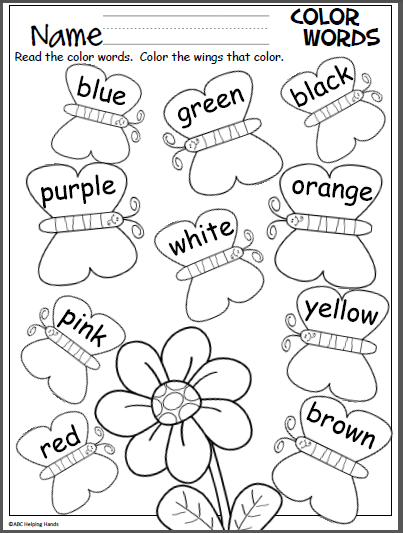 It is where they can learn new words, practice memorization, and easily recall. Nursery rhymes are also a great way to teach toddlers how to count and say the alphabet. But when is the best time to let your toddler memorize nursery rhymes?
It is where they can learn new words, practice memorization, and easily recall. Nursery rhymes are also a great way to teach toddlers how to count and say the alphabet. But when is the best time to let your toddler memorize nursery rhymes?
Most children who are exposed to nursery rhymes at a very young age can memorize and sing the tune at 2 years of age. By the time they are four, they can sing the tune with the lyrics. One of the best moments of being a parent is to watch your child sing along with their favorite nursery rhyme. It is both delightful and entertaining.
Best Time for Toddlers to Learn Sensory Skills
Toddlers use their sensory skills to explore the things around them. Sensory play and activities help promote a child’s sensory development. This can build up their ability to accomplish more complex tasks and support other skills such as language development, social interaction, problem-solving skills, and cognitive growth.
The best time for your toddlers to learn sensory skills is during the time when your child starts to react to different sensory experiences. Providing your children with more opportunities to actively explore their senses is crucial for their brain development.
Providing your children with more opportunities to actively explore their senses is crucial for their brain development.
Newborns from 0-to 12 months will already start using their sensory skills as an observer. They take in new sensations such as sound, smell, taste, and texture as an active participant.
By the age of 12 months, they will start grabbing and putting things in their mouth. When they reach the toddler stage it is easier to introduce the different senses through sensory activities. At this rate, they are slowly trying to get a grip of what their senses are for.
Related Read: Are Exersaucers Bad for Babies?
Image from Flickr by Nenad Stojkovic
Frequently Asked Questions
Should a 2 Year Old Learn Colors?
A two-year-old may not be able to understand the concept of colors completely but they should be able to identify at least one color at this age. By this time, the child should learn how to name colors and identify basic shapes and numbers.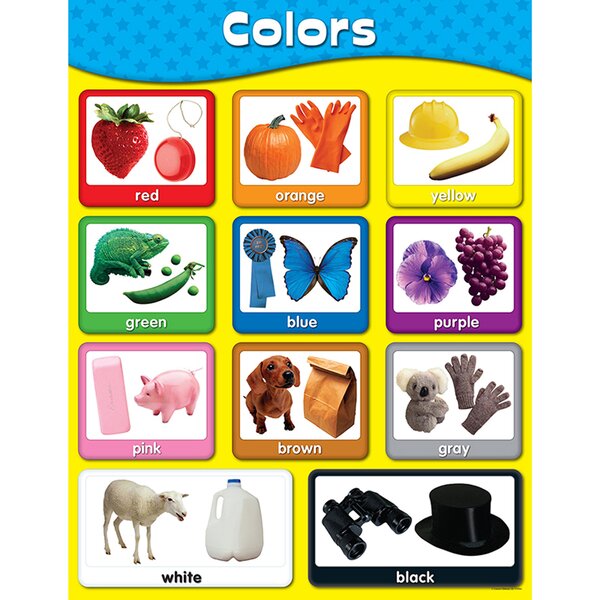 Allowing them to participate in fun activities can effectively help them learn primary and secondary colors faster.
Allowing them to participate in fun activities can effectively help them learn primary and secondary colors faster.
What Age Should Toddlers Identify Colors?
Most children can identify at least 2 colors when they are 3 years old. It is also the best time to play a matching game using the different objects that can be seen around them. There are a lot of ways that you can help your toddler learn colors more quickly. You just have to be more patient and supportive when teaching them.
Final Thoughts
You can make learning fun and stimulating for toddlers to help them accomplish their developmental milestones. Some of the kids will develop their skills sooner than others but allowing them to learn at their own pace can help them enhance their ability to accomplish more complex tasks in the future.
More on Child Development
- When Do Babies Stop Drooling | Drooling Questions Answered
- When Do Babies Hold Their Head Up? Know your baby’s Motor Development
- When do Kids Start Talking?
How To Help Your Young Child Learn Colors
What are some fun ways to teach colors for kids? If this is a question you’ve been asking yourself, you’ve come to the right place.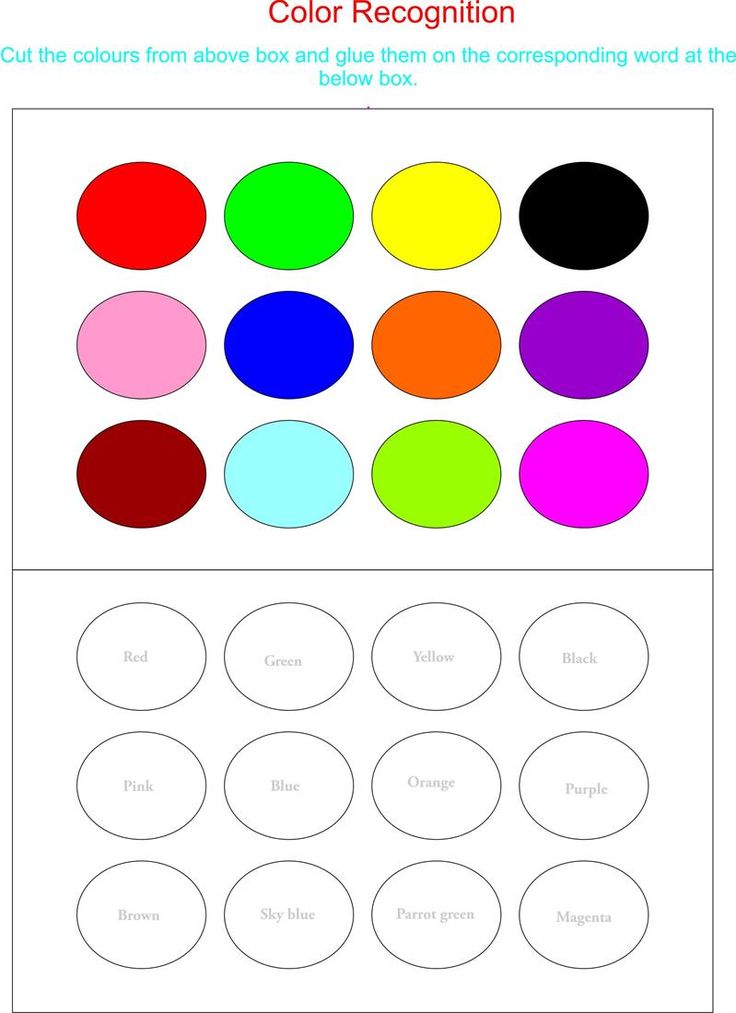
As a toddler or preschooler, your child has definitely noticed all the different hues in the world around them, but now it’s time to help them make sense of it all.
Fortunately, teaching your child colors doesn’t have to be an overwhelming task. As you will see below, this can be a fun and engaging learning experience for both you and your child.
With a bit of planning and creativity, your young learner will soon know all the colors of the rainbow and so much more!
Table of Contents
- Why Is Learning Colors For Kids Important?
- Tips To Keep In Mind
- 10 Simple Activities To Teach Colors For Kids
- Make Every Day A Colorful Day
Why Is Learning Colors For Kids Important?
Our world is made up of different shapes and colors. Cars, houses, flowers, trees, buses, fruits, tall city buildings…everything has its own unique visual characteristics.
Before they were even a year old, your child noticed these things, too, but of course, none of it made sense.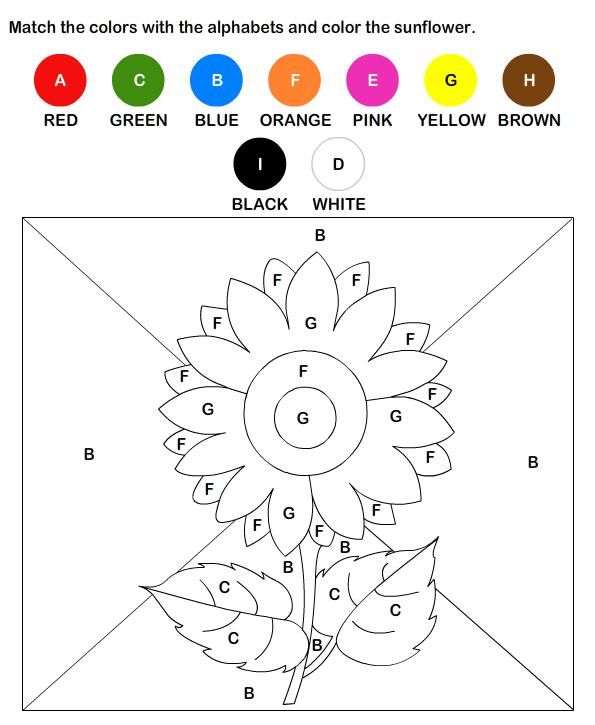 Now that they are older, it’s time to start piecing together all the information from their environment.
Now that they are older, it’s time to start piecing together all the information from their environment.
Teaching your child colors will help them make sense of the world around them. But did you know that understanding colors can also impact language skills and overall learning?
It’s true! As your child begins to understand that words represent objects, they’ll also realize that some words can describe certain features of those objects.
For example, blue can describe the sky, a blueberry, and a blue crayon. As your child starts to use color words to describe the things around them, they are also building their vocabulary and becoming better communicators.
But language isn’t the only academic skill built through lessons on colors for kids. Perhaps the most surprising of all is how learning colors can help introduce children to basic math skills. How?
Remember that every time you introduce your young learner to a new color, their brain actively works to process the information.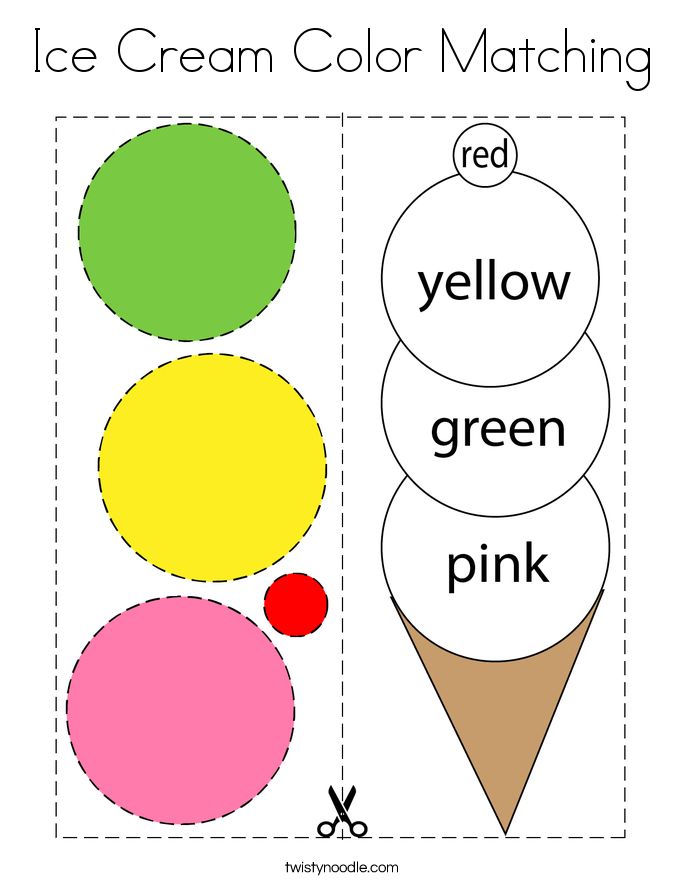 A lot of organizing, categorizing, and comparison takes place when sorting different colors and shapes.
A lot of organizing, categorizing, and comparison takes place when sorting different colors and shapes.
Examining something and identifying attributes, such as color, is an essential skill for math. So, in the future, when they’re trying to tell if a shape is an octagon or a hexagon, they’ll use the same visual discrimination skills they learned when learning colors.
(Note: If your child seems to have trouble distinguishing colors, they may be color blind. Contrary to popular belief, that doesn’t necessarily mean they don’t see colors at all, but it can make school more difficult for them down the road [i.e., reading off a chalkboard].
If you suspect your child may be color blind, ask your child’s pediatrician or eye doctor about getting them tested.)
Now that you’re clear on all the incredible benefits of teaching colors for kids, you probably want to start helping your child master them!
Before we get started on that, here are some basic tips to keep in mind when practicing colors with your child.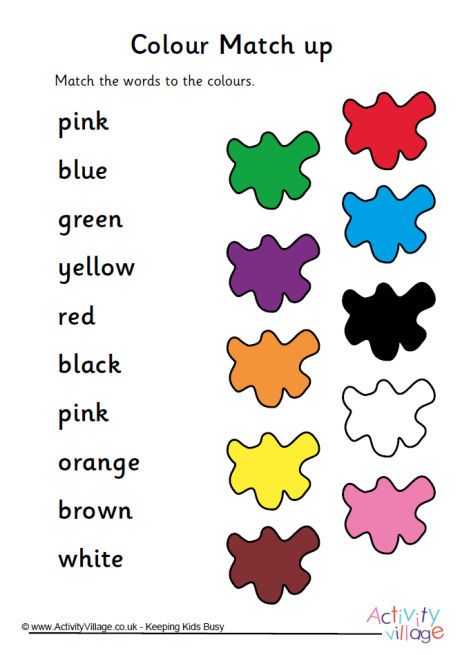
Tips To Keep In Mind
It can be challenging to teach colors to a toddler simply because there are so many contrasting colors constantly around us.
Adding to that challenge is the fact that many different shades of one color exist. For example, there are several reds (think: maroon, crimson, scarlet, etc.), but they are all called “red.” This can be tricky for children learning colors.
Have no fear! We’re here to help. The following are some basic tips to keep in mind as you help your young learner understand colors.
1) Start With The Basics
Think about how we can quickly calculate our change after buying something at a store or spell a new word correctly after hearing it for the first time. This is possible because we understand the basics of math and the English language.
The same approach needs to be applied when teaching colors for kids. It’s best to start with the primary colors (red, blue, and yellow), and once your child gets comfortable with these, move on to other hues.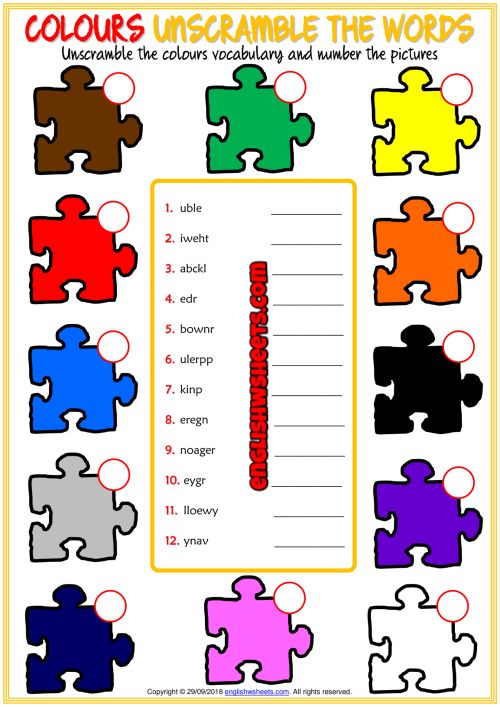
If you’re still in the primary colors stage, what simple efforts can you take to help emphasize these colors in your everyday life?
Here are a few examples:
- When you’re having dinner — “Do you want to use this blue plate?”
- When you’re taking the dog for a walk — “Look at that yellow car.”
- When it’s time to play — Hand them only red, blue, and yellow objects. If they have building blocks, ask them to sort only the red, blue, and yellow blocks.
Once your child is familiar with their primary colors, you can move on to other basic colors, such as green, orange, purple, black, white, brown, and gray.
A great way to help children learn about colors is by interacting with them. We love this sensory game that lets kids practice naming colors and discover what happens when you combine them.
2) Choose Contrasting Colors For Kids
As we mentioned earlier, there are so many different colors in this world that sometimes children can find it challenging to tell them apart.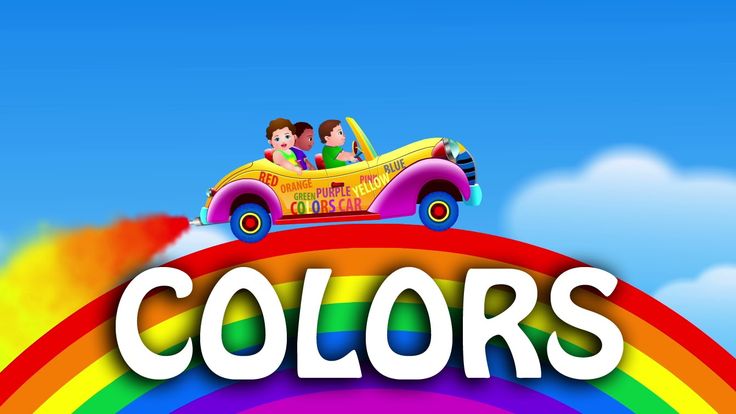 It’s even more difficult when the colors are similar (e.g., red, maroon, orange, etc.).
It’s even more difficult when the colors are similar (e.g., red, maroon, orange, etc.).
For this reason, it’s best to first focus on the hues that are clearly distinguishable before introducing similar colors.
3) Help Them See Color Categories
Once you’re confident that your child knows their basic colors, you can start introducing similar colors (olive green, forest green, etc.). Most of these can be found in the world around you.
As explained, similar shades can be challenging to learn, so in the beginning, the focus shouldn’t be on having them learn all the different terms but, rather, exposing them to the idea of categories.
To help your child recognize the differences between shades, point out an object and name its color. Then, ask them to find other things that are the same color. For example, you could say, “This is a blue sock. Can you find me anything else that’s blue?”
When they find another blue object, talk about what you notice. For example, is the blue the same on both things, or are there differences? Is one lighter or darker than the other? Do either look like a brighter blue?
These simple conversations can help your child as they begin expanding their definition of the color blue.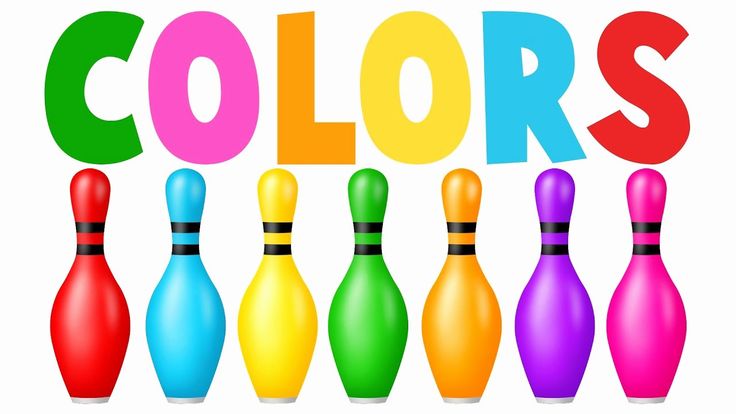
4) Point Out The Connection Between Colors And Feelings
In English, colors aren’t only used to describe how something looks. We also use color terms to express our emotions.
For example, when we say somebody is “feeling blue,” they’re sad. Similarly, if someone is “seeing red,” they’re angry.
While you don’t need to detail the emotions associated with each color at this age, you can make your child aware that feelings and colors are connected.
They can start to use colors to express themselves, a skill that helps them better understand their emotions. This ability is one of the social-emotional topics your child can practice with the Learn with Sesame Street app, powered by HOMER.
10 Simple Activities To Teach Colors For Kids
Learning about colors can be a wonderful part of playtime with your child. To help your child practice their colors, use these engaging activities.
1) Colorful Necklace
Children are often curious and enjoy exploring different colors and materials.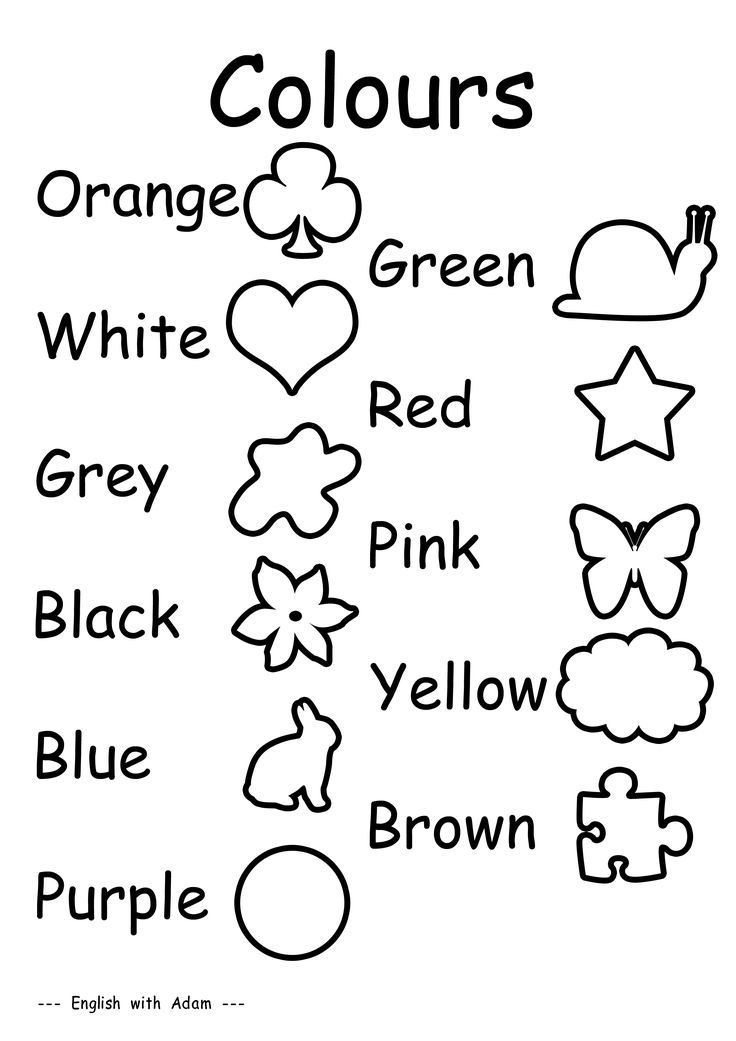 This means that when teaching them about colors, the more engaging the activity the better — like using colorful beads to create necklaces.
This means that when teaching them about colors, the more engaging the activity the better — like using colorful beads to create necklaces.
What You’ll Need:
- Colorful beads (in primary colors)
- Yarn or necklace string
What To Do:
After teaching your child the primary colors, try creating a red, blue, and yellow necklace. Tie a knot on one end of the string. Then, show your child how to string beads onto it.
This necklace can be in a pattern or not. It’s really up to you!
When creating the necklace, remember to name the colors you use and encourage your young learner to repeat them.
Note: While working with small items, it’s essential to use safe and non-toxic materials and keep an eye on your young child at all times.
2) Finger Painting
Engaging your child’s senses is one of the most effective ways to help them learn new concepts. That’s what makes finger painting so great for teaching colors!
What You’ll Need:
- Finger paint (in primary colors)
- Finger paint paper
- Newspaper
What To Do
Put a few pieces of newspaper on your table to protect it from spills. Then, place your child’s finger painting paper on top.
Then, place your child’s finger painting paper on top.
Let them go to town using their fingers to create beautiful, colorful pictures. You can use the three primary colors in finger painting and mix them up to form secondary colors (purple, green, and orange).
During the activity, speak about the colors your child is using and the colors that are formed while mixing.
Once the painting is complete, let them tell you about what they created. Encourage them to use color words while they’re describing the artwork.
3) Same Objects, Different Colors
As you teach your child different colors, they may begin associating certain colors with specific objects. For example, if you show your child a red apple, they may associate the shape of the apple with red.
It’s essential to show your child another color apple (e.g. a green one) so they understand that you’re referring to the color of the object, not the object itself. This activity helps you do just that.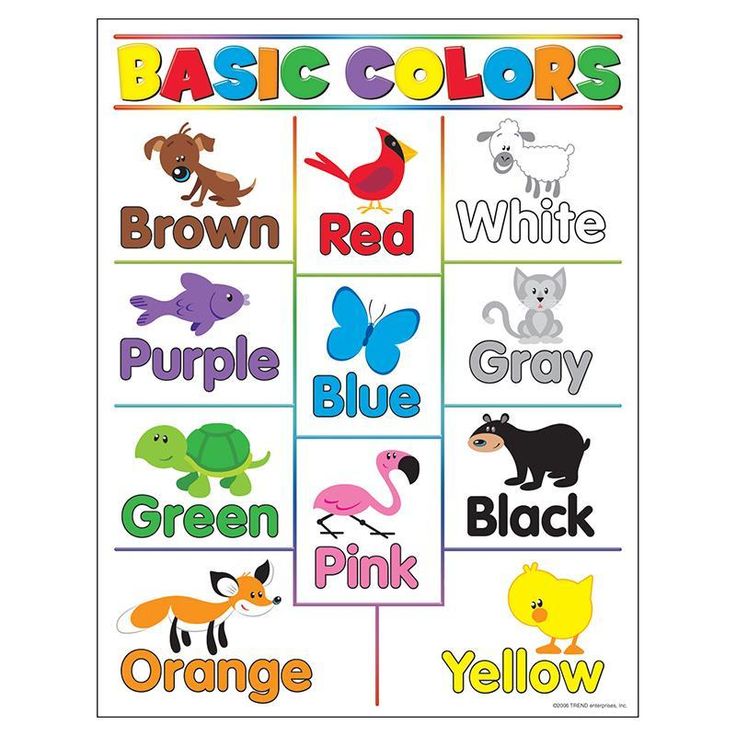
What You’ll Need:
- Two or more objects that are the same except for their color (such as apples, blocks, crayons, etc.)
What To Do:
Hand your child one of the objects and ask, “What color is this?” Once they answer, you can ask, “Are all (objects) this color?”
This will help them start thinking about colors in the world around them. If they aren’t sure, hand them the other object and ask them what it is. Reinforce that it’s the same type of thing as the first one, but it’s in a different color.
To help them further understand, sorting activities can be effective. For example, ask your child to sort the different colors of the same object (e.g., multi-color blocks).
As they get older, you can also encourage them to sort by the object, regardless of color. This will help your child continue developing skills of categorizing.
4) Read About Colors
There are lots of amazing children’s books that speak about colors. While reading to your child, be sure to point out all the colors in the book.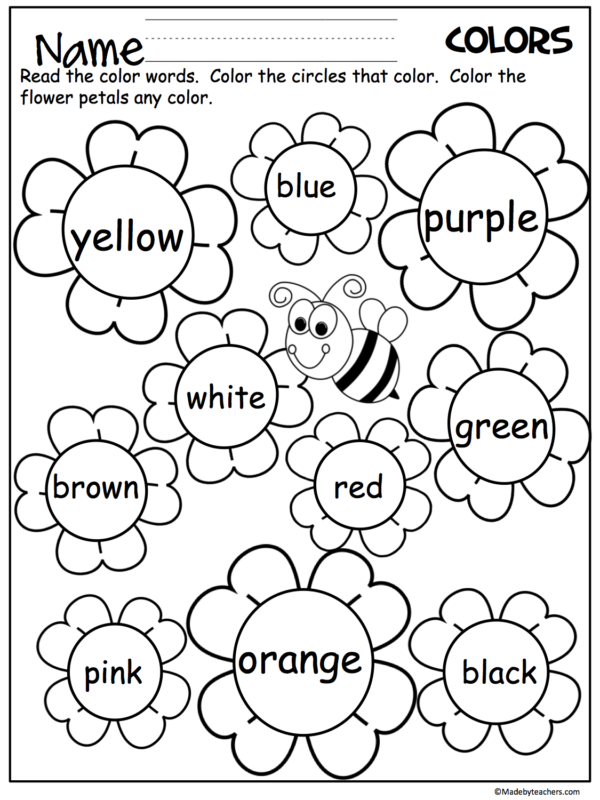
What You’ll Need:
- Books about colors (use your favorite or see our recommendations below)
What To Do:
Grab a book about colors and read it aloud to your child. As you go through each page, talk about the colors you see. Then, you can ask your child to point to things that are different colors. For instance, you can say, “Do you see anything orange on this page?”
This teaches your child to scan the entire picture and focus on the details. As they look for one specific color, they’re practicing their visual discrimination skills, which they’ll use throughout their lives.
Here is a list of some incredible books that will help bring fun and entertainment into learning about colors:
- Brown Bear, Brown Bear, What Do You See?
- A Color of His Own
- The Day the Crayons Quit
- Baby, See the Colors!
- What Makes a Rainbow?
However, don’t feel limited to reading only books about colors.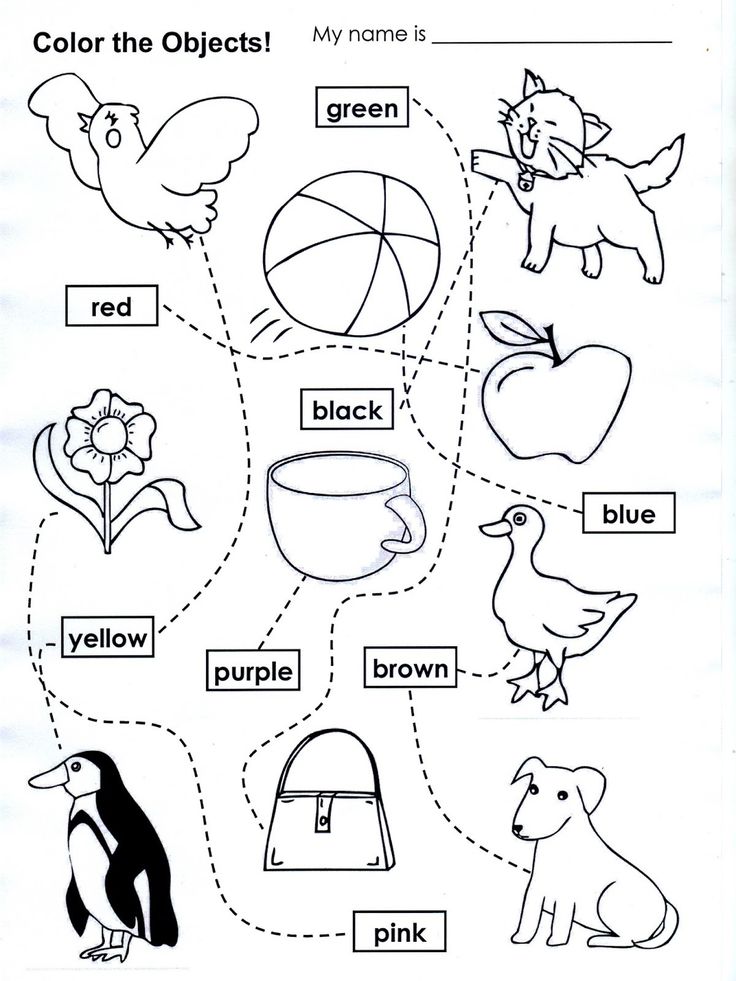 You can talk about the different hues on the pages of any picture book.
You can talk about the different hues on the pages of any picture book.
5) Create A Color Mixing Sensory Activity
When your child uses their senses while they’re learning, they create stronger neural connections, and this helps them better remember the information.
This activity also gives your child a chance to explore colors creatively. It allows them to experiment and see what happens when combining two colors.
What You’ll Need:
- Icing or shaving cream
- Food coloring
- Two small bows
- Toothpick or spatula
- Large zip-top bag and tape, or cookie sheet (The cookie sheet option is more tactile. However, you can opt for the bag if you’re looking for low-mess.)
What To Do:
Start by filling your zip-top bag with icing or shaving cream. Next, choose two colors of food coloring and add each color into the bag. Tape it down to a working surface. Your child will then need to mix the colors with their little fingers.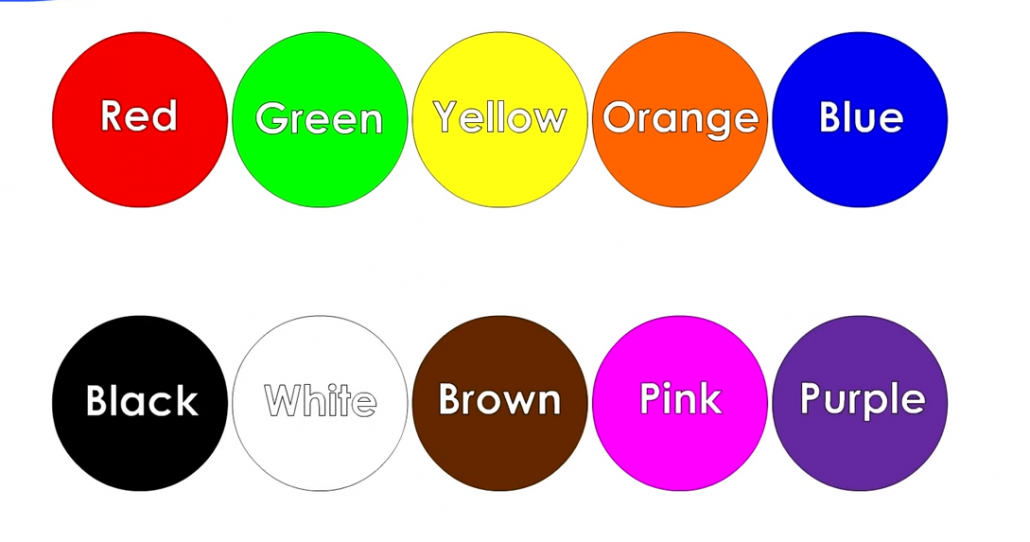
Grab the two small bowls and put icing or shaving cream into them. Add one to three drops of color into the bowl and fold the color into the icing or cream.
You can then scoop the colored icing or cream into the bag or onto the cookie sheet and let your child mix the colors.
This is a fun activity to help children learn that colors are not necessarily stagnant, and mixing them will help produce a different color.
See more details here!
6) Sing Color Songs
Kids love to sing along to fun songs. You can take advantage of this natural love for singing to help your child learn about colors. And the best part is that these silly songs are usually pretty catchy, so your child will likely sing them long after the activity ends.
What You’ll Need:
- A way to play a song for your child to listen to (such as your phone or a computer)
What To Do:
Play a song for your child and start singing the lyrics. Then, repeat it a couple of times to help them learn how it goes.
Once they know the words, you can sing the song anywhere to review colors for kids on the go.
Not sure where to start? Check out our fun activity here that helps teach children pantone colors.
You can also sing some of our favorite songs:
- “It’s Not Easy Being Green” by Kermit the Frog
- “The Color Song” by Bryant Oden
- “Colors of Our Clothes” by David Burba and Lisa Campbell
- “Colors All Around” by Jack Hartmann
- “Jenny Jenkins” by Lisa Loeb
- PANTONE Colors: The Song
You can find these songs on YouTube, or search our Learn & Grow app. Happy singing!
7) I Spy Colors For Kids
This classic game is perfect for teaching colors to kids. Since it doesn’t require any materials, you can play it anywhere.
What You’ll Need:
- Nothing!
What To Do:
Look around you at all the different colors. Then, secretly pick out one object that only has one main color. Tell your child, “I spy something (insert color here).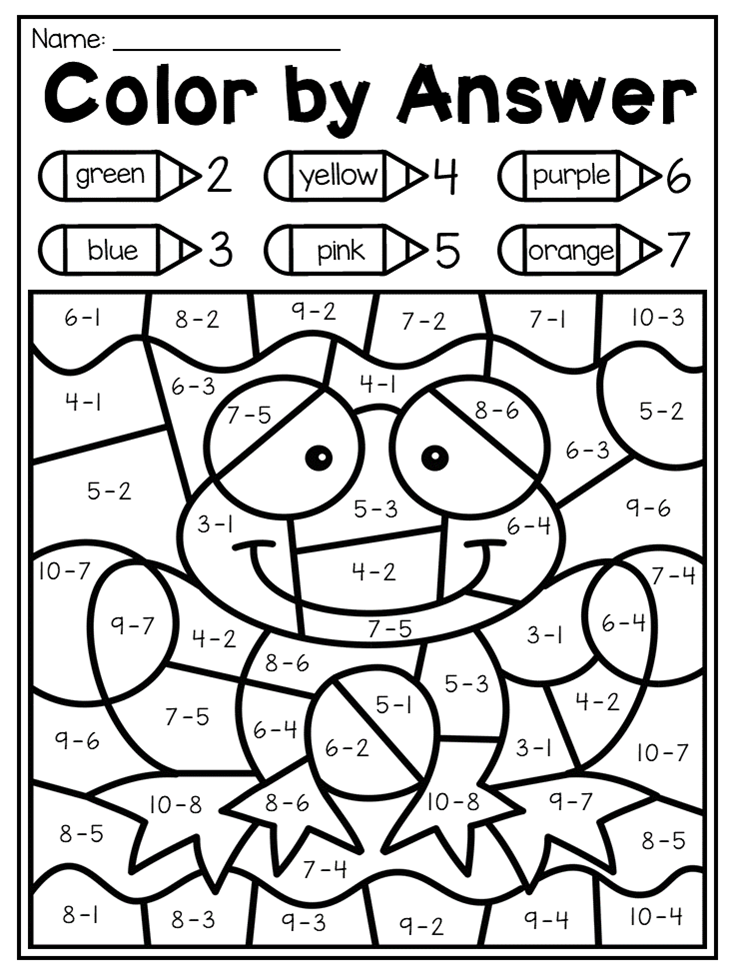 ”
”
For example, you might say, “I spy something blue,” if you’re looking at a blue shirt. If your child correctly guesses the object, then it’s their turn to pick the next thing and give a clue about its color.
8) Tell A Colorful Story
Encourage your child to use the magnets from the HOMER Explore Letters Kit creatively. Have them use the pieces to tell a story and remind them to add some color words to their telling.
What You’ll Need:
- Explore Letters Kit from HOMER
What To Do:
Set up the magnetic story box so it’s ready to go. Go through the magnets and pick out a few that you could use to tell a fun story.
Using the pieces and the magnet backdrop, tell your child a story. As you speak, remember to weave some color words into the tale. For instance, you might say, “The bright pink flamingo decided he wanted to play ball with the brown monkey.”
You’re modeling the activity for your child as you tell a story. When you finish, let them tell a story of their own.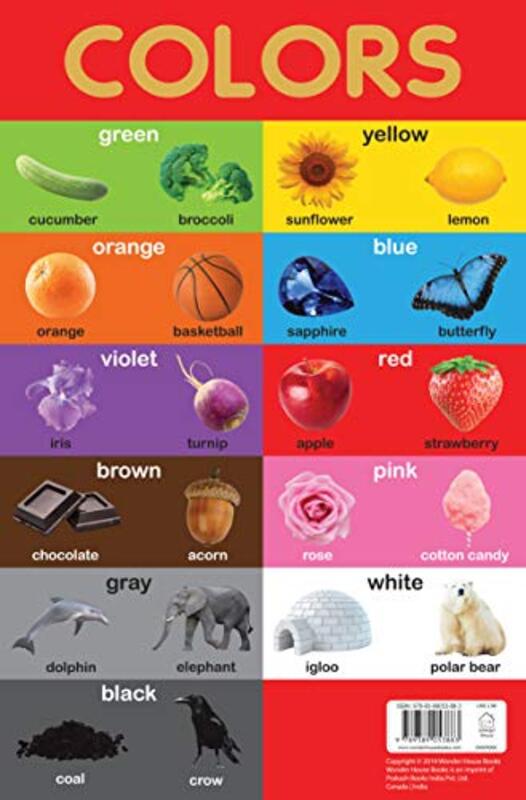 You might notice they simply copy your story at first, and that’s okay.
You might notice they simply copy your story at first, and that’s okay.
Keep playing, and it won’t take long before your child can tell a story all their own.
9) Make A Picture
This activity is perfect for a rainy day. It’s a fun way for creative kids to practice making something with colorful paper strips.
What You’ll Need:
- Construction paper in all sorts of colors
- Scissors
- Glue or tape
- A white sheet of paper
What To Do:
If your child knows scissor safety skills, have them cut the construction paper into strips of different colors. (Otherwise, you cut them.) The strips can all be the same width, or you can mix them up.
Once you have a nice pile of colorful strips, invite your child to glue or tape them onto the white sheet of paper to create a design of their choice. When they are done, talk to them about their colorful picture and have them tell you all about what they created.
Mix things up the next time you do this activity by using circles, squares, or various shapes at once instead of strips.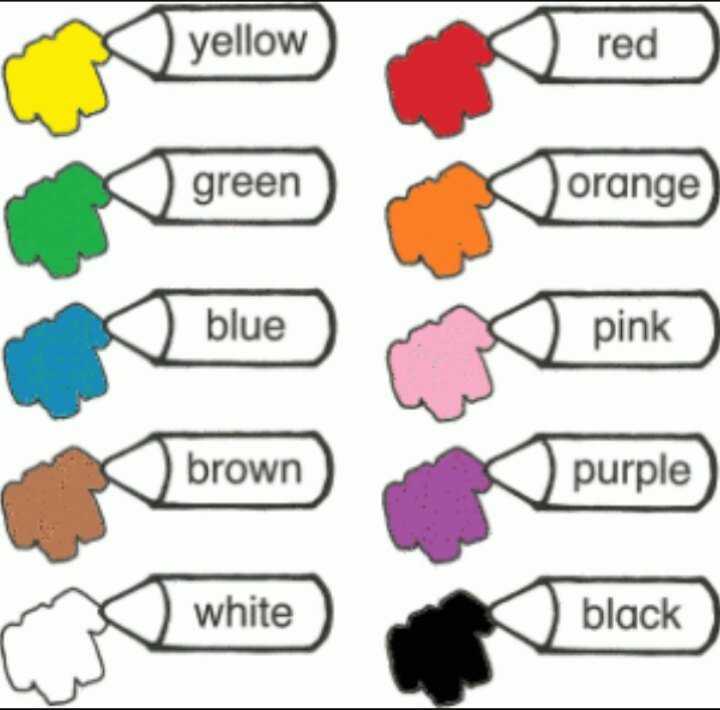
10) Design A Color Scavenger Hunt
This activity is perfect for kids who love to move around. It’s also a great way to review all the different colors they’ve learned.
What You’ll Need:
- A sheet of blank paper
- Colored pencils or crayons
- A pencil or pen
- A basket or bag
What To Do:
Create a scavenger hunt for your child by drawing boxes on a blank sheet of paper with colored pencils or crayons. Fill in each box with the color it represents to make it easy for your child to identify it.
Quickly review the colors with your child. Point to each box on the sheet and have them tell you the color.
Then, challenge them to find an object around the house for each color. Once they find something, have them put it into the basket or bag. Next, show them how to use the pencil or pen to put an X or a check through the color box they found.
Have them continue searching for items until they have a basket or bag full of colorful objects. Take time to have them tell you the color of each thing they found.
Take time to have them tell you the color of each thing they found.
Make Every Day A Colorful Day
Colors are all around us, and your child has most likely already noticed these different hues without tagging them with color names. However, colors for kids are an important part of childhood development and math prep.
This is where you come in. Armed with the activities above, you can help make learning about colors fun and exciting.
When teaching colors for kids, remember to start with the primary hues and then gradually introduce more. With patience, your young learner will soon recognize all the colors of the rainbow — and so many more!
For more fun learning activities, check out the Learn & Grow app, powered by HOMER.
Author
Learning colors: how to teach a child to distinguish colors and shades
It is generally accepted that by the age of three a child should learn to distinguish between primary colors. This skill is an important part of sensory development, it gives the child the opportunity to see the world in a new way.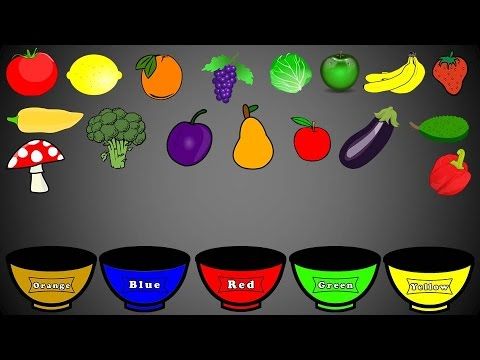 Often, if the baby does not know or confuse colors, parents have concerns about the pace of development of the child. Do I need to worry if the study of colors is not easy for a child? How to teach a child to distinguish colors? You will find answers to these questions in our article.
Often, if the baby does not know or confuse colors, parents have concerns about the pace of development of the child. Do I need to worry if the study of colors is not easy for a child? How to teach a child to distinguish colors? You will find answers to these questions in our article.
At what age does a child begin to see colors?
Studies have shown that children begin to perceive colors by 2-3 months. The first colors a child sees are yellow, orange, red, green. At this age, babies can already react differently to their toys of different colors (for example, a red rattle can please a child more than a blue one), look at bright pictures with enthusiasm. The baby's world quickly acquires colors, but if we talk about the ability to consciously find an object of the right color, then usually it appears in children at the age of one and a half. It is at this age that it is optimal to start learning colors in a playful way. You can voice the names of flowers to a child for up to a year, this will only benefit him.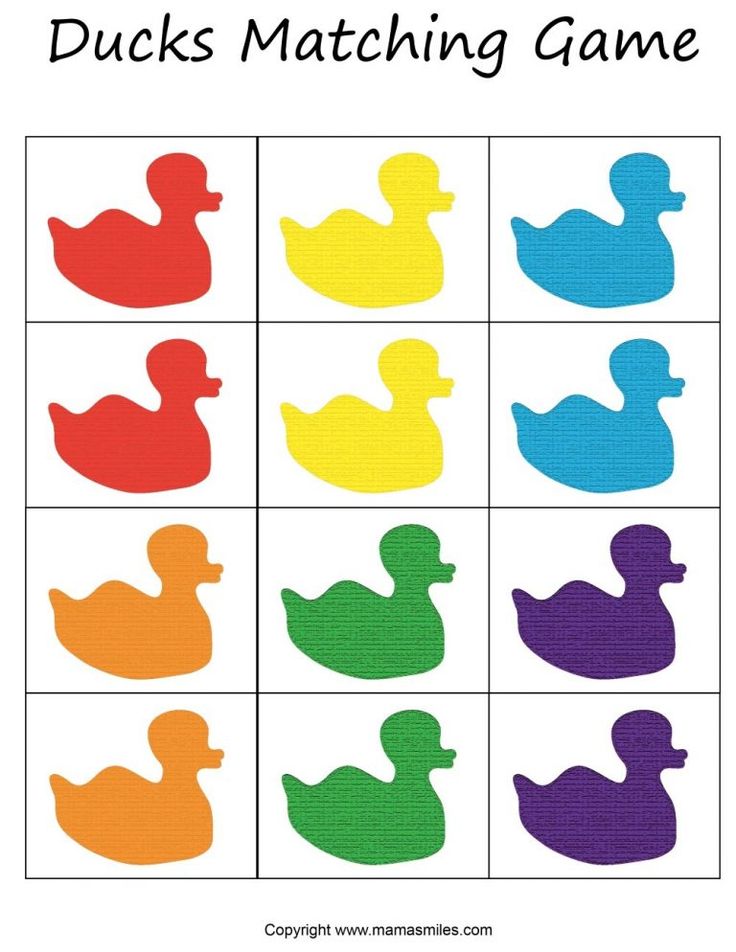 But do not demand too much from the baby, remember that his brain is actively developing, and as soon as the time comes, you will certainly see the results.
But do not demand too much from the baby, remember that his brain is actively developing, and as soon as the time comes, you will certainly see the results.
To see if your child is ready to learn colors by playing with building blocks, ask your child to point to a part that is the same color as yours. If the baby can find objects of the same color, then he is quite ready to memorize the names of colors.
Learning colors in everyday life
Children get most of their knowledge about the world in everyday life: communicating with adults and peers, observing nature, playing. The study of flowers is no exception. Sometimes a child does not need to do special exercises to learn to recognize colors. For this, it is enough that he hears the name of the color and associates it with a specific thing. During daily activities, voice for the child what color the objects are around. Whether you are drawing, playing with blocks, looking at cars in the yard, reading, swimming, eating, dressing - in each of these situations, you can gently teach your child to distinguish colors.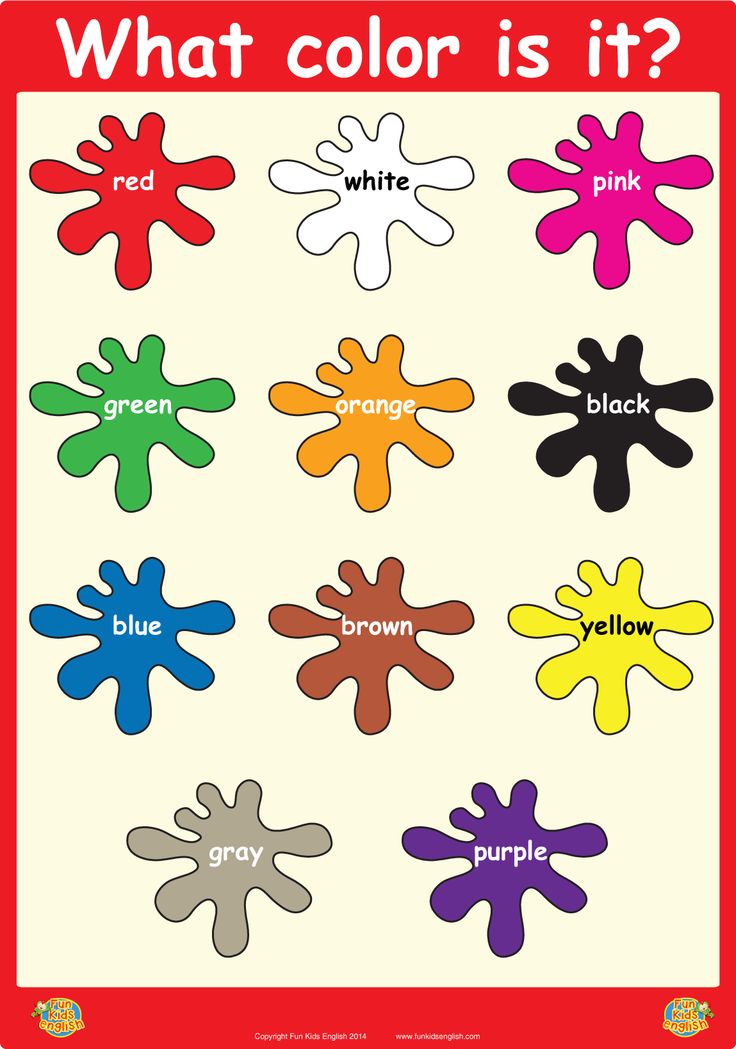
It is important that the study of colors does not turn into torture. You should not constantly test the child's knowledge by asking him which color is which. Soon the baby may just start to ignore you. “Let's paint the sun yellow!”, “What a delicious green cucumber!”, “Oh, where did the blue cube go? Here he is!" are examples of how you can gently help your child remember colors.
Games for learning colors and their shades
In order to get your baby interested in learning colors or to reinforce the knowledge they already have, you can offer your child to play special “color” games.
Color Sorting
Sorting games are designed to help children learn to group objects by color. Any materials at hand can be items for sorting: toys, covers, designer parts, cubes, buttons, cereals, pencils, etc. You can organize the game in various ways:
You can come up with as many options for sorting by color, it all depends on your imagination.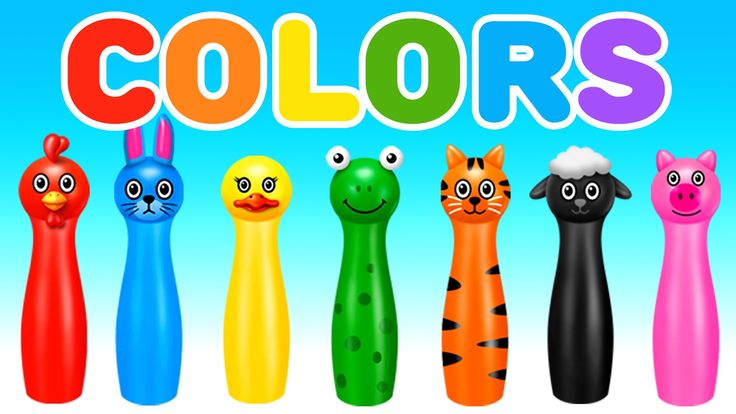 So that the child does not lose interest in the task, connect the plot of the game with his favorite characters, toys (for example, a cat will eat from a yellow bowl, and a baby elephant from a red one, etc.).
So that the child does not lose interest in the task, connect the plot of the game with his favorite characters, toys (for example, a cat will eat from a yellow bowl, and a baby elephant from a red one, etc.).
Match a Pair
Help your child learn colors with the Match a Pair series. Ask your child to find a petal for a bug, a pot for a flower, a roof for a house, etc. You can present the baby with a deliberately wrong option and ask to correct the mistakes.
Pick up a patch
Show the child the picture with the missing details. Ask him to fill in the gaps (this can be done with plasticine, pom-poms, caps, cards, etc.).
Color Lotto
At the age of about one year, children begin to be interested in various lottos. In the color lotto, the task is to collect pictures of the same color on the card.
Colored Sensory Boxes
Create a sensory box for your baby where everything is the same color. During the game, the child will be able not only to remember the color that he sees, but also to develop fine motor skills, tactile sensitivity, thinking, and imagination.
Color days
This is one of the most interesting and popular ways to teach your child to distinguish colors. Its essence is that during the day (or several days) you draw the child's attention to objects of a certain color. For example, on a yellow day, you can dress in yellow clothes, play with yellow toys, draw a yellow chicken. Surrounded by one color, the baby will easily remember it.
Cards for learning colors
You can learn colors with your child using cards. With the help of Doman's "Colors" cards, you can introduce your baby not only to the main colors, but also to different shades. It is important not to overload the child with unnecessary information about the names of 10 shades of green or red. Learn only those shades whose names you can use in the game and life.
Board games for learning colors
Board games are a great way to learn about colors and consolidate knowledge about them. Currently, the stores offer a wide range of similar games for every taste and budget.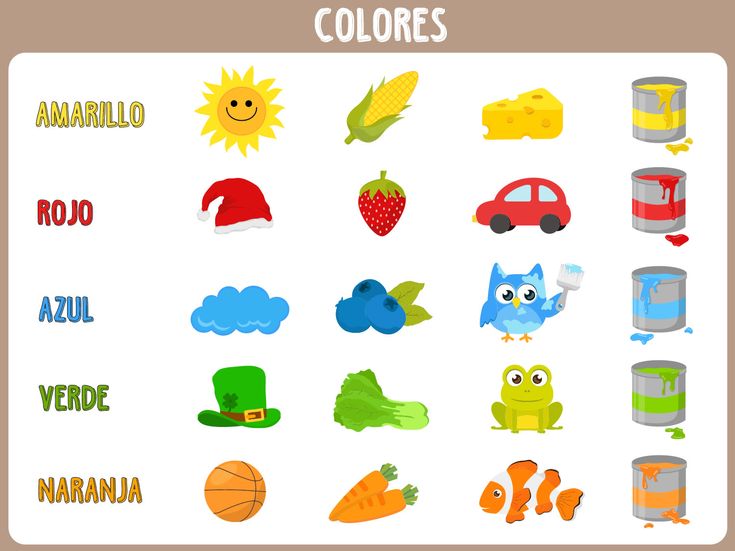 Choose a game that suits your child.
Choose a game that suits your child.
Educational cartoons
There are many educational cartoons on the Internet that will help your child memorize colors quickly. Here is one of them:
Educational books
If your little one loves to listen to stories and look at pictures, this is the way for you. We all remember the wonderful story of V.G. Suteev "Rooster and paints", by S.Ya. Marshak has a whole “Colorful book”. You can also find many educational books that will become your faithful assistants.
Conclusions
We have listed for you different color learning games. In order for a child to master the concept of color well, it is worth adhering to a number of principles: do not rush the baby, provide a variety of material for games, discuss what you see.
Conclusion
You can start studying colors from an early age, the main thing is that it is interesting for the child.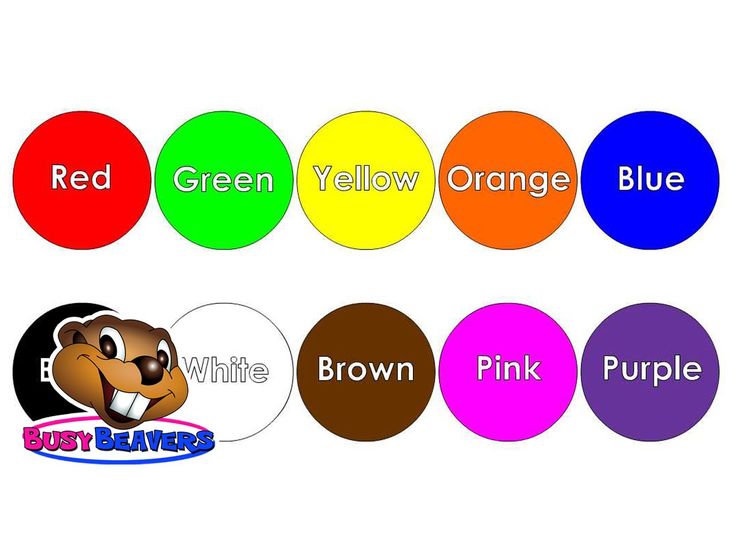 It is impossible to specify clear age limits when a child should learn primary colors. This process, like all development, is individual for each baby. The Sozvezdie Development Center has created a Montessori environment for kids, aimed at the comprehensive development of the child. In the classes "Together with Mom" children in a playful way get acquainted with the concepts of color, shape and size, do thematic creative work. You can learn from our teachers how to interest a child in an activity and how to properly present him with cognitive information. Develop with us!
It is impossible to specify clear age limits when a child should learn primary colors. This process, like all development, is individual for each baby. The Sozvezdie Development Center has created a Montessori environment for kids, aimed at the comprehensive development of the child. In the classes "Together with Mom" children in a playful way get acquainted with the concepts of color, shape and size, do thematic creative work. You can learn from our teachers how to interest a child in an activity and how to properly present him with cognitive information. Develop with us!
Prepared by a Montessori teacher
Sokolova Oksana
Learning colors or how to teach a child to distinguish colors
Reading 5 min Views 2k. Posted by
Learn the simplest colors - 6 colors: white, black, red, yellow, blue, green. To learn colors - show how to combine colors.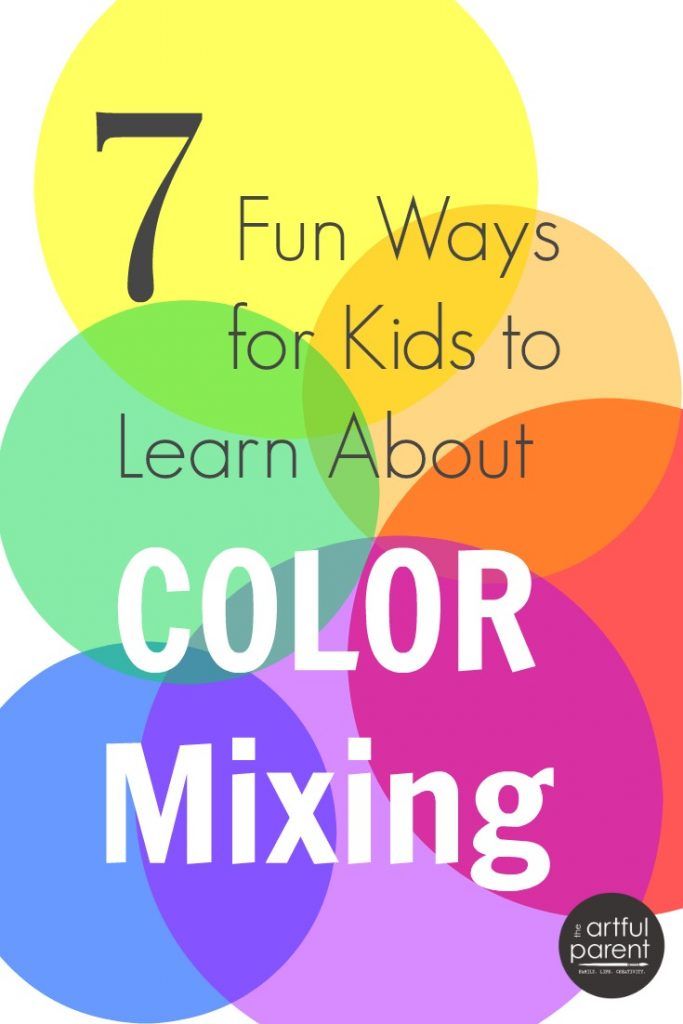 When connected correctly, the cards disappear. If you connected the cards incorrectly, click on the glue and the cards will separate again. Good luck!
When connected correctly, the cards disappear. If you connected the cards incorrectly, click on the glue and the cards will separate again. Good luck!
As a parent, you want your children to develop. This may bother you if you feel like your child is behind. One concern of many parents is related to the study of colors. There can be a lot of misinformation and wrong expectations when you just want to know when kids are learning colors? To overcome the confusion, you need to know the child development chart for learning colors and what activities can help your child develop.
Contents
When do children learn colors?
Your baby's ability to see color develops by four months of age. Since then, you've probably noticed that your little one loves bright colors. The attraction to these colors is characteristic of children, and these colors help them to distinguish color in later life. The time it takes children to learn their color varies, just like any other stage of development.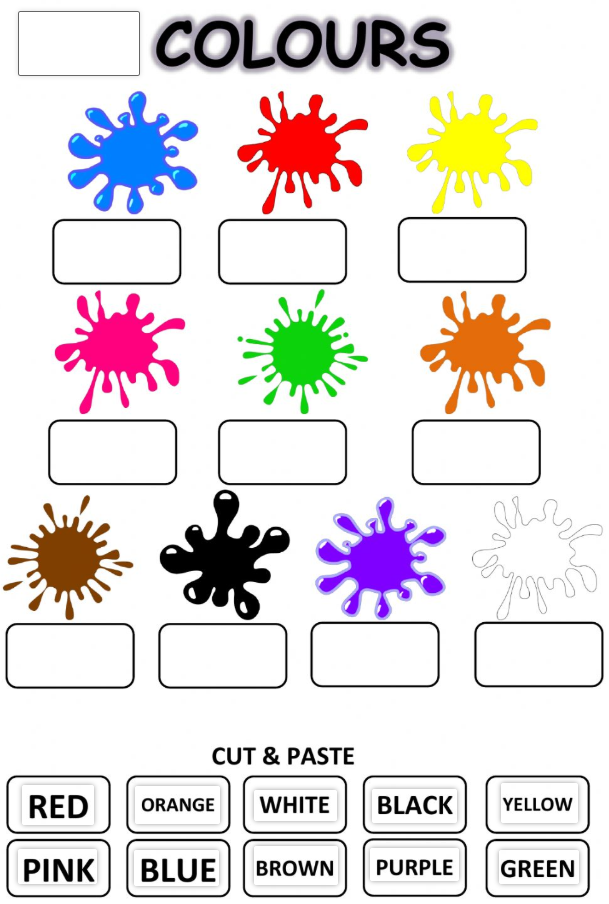 No baby is unique, but babies learn colors around 18 months old. This development continues until the age of two.
No baby is unique, but babies learn colors around 18 months old. This development continues until the age of two.
By the age of three, most children should know at least one color. The Centers for Disease Control recommends that children know several colors by age four. Some kids may even know more colors than this, but your clue to whether your child is walking or not is the ability to identify at least one color by age three.
At the same time that children begin to recognize color, they also begin to develop the ability to distinguish between sizes, such as large and small, and shapes.
Problems in learning colors
Some parents think that their children know colors better than other children. This is because it can be difficult for children to separate the color from the object. If you use the same objects to teach and describe colors over and over again, your child is more likely to associate the name of the color with the object. They don't understand the difference between a color and a noun.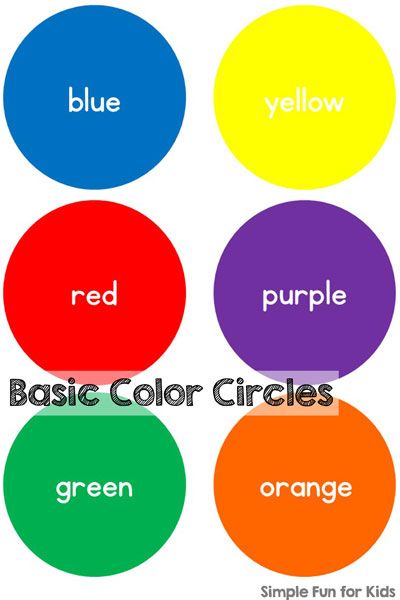 For example, when you call an object a red ball, your child treats all ball names as a red ball, rather than separating the color name from the object name. Developing the ability to distinguish color from an object takes time. Many parents use shapes and colors together to teach their kids about both. This is a great idea, but the child most likely does not distinguish green from a triangle. The concept of color becomes too abstract to understand.
For example, when you call an object a red ball, your child treats all ball names as a red ball, rather than separating the color name from the object name. Developing the ability to distinguish color from an object takes time. Many parents use shapes and colors together to teach their kids about both. This is a great idea, but the child most likely does not distinguish green from a triangle. The concept of color becomes too abstract to understand.
Learning to distinguish red and blue colors
Learning to understand that color is not an object, but a sign of an object. We start with two colors, play until we begin to distinguish between different colors. To kids, the name of the color is read by an adult.
Learning colors red and green
Now we learn two colors red and green. Two different colors, you need to understand that these are signs of objects.
Another problem parents face is when children know the names of colors without being able to correctly match those names to the color.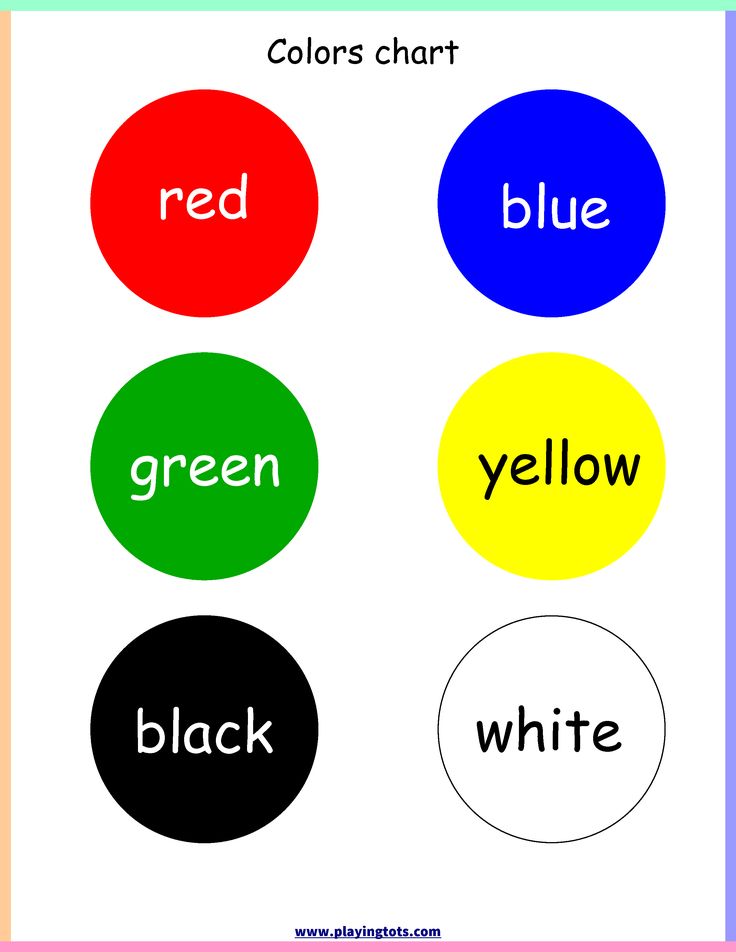 Keeping in mind that children develop at different rates, many children develop language skills before they learn color. Don't worry if your toddler knows and says the names of colors but doesn't accurately identify those colors with the object. If your child calls his red fire truck yellow, that's fine. Consider this a good sign that your child already knows these names. Your task is to help the child correctly associate the names with the color.
Keeping in mind that children develop at different rates, many children develop language skills before they learn color. Don't worry if your toddler knows and says the names of colors but doesn't accurately identify those colors with the object. If your child calls his red fire truck yellow, that's fine. Consider this a good sign that your child already knows these names. Your task is to help the child correctly associate the names with the color.
Developmental problems in color learning
Some disorders may contribute to slower color development and learning. Children with autism spectrum disorders may have trouble communicating that they know a certain color. Instead of knowing color words and not being able to give that color a meaningful meaning, a child on the spectrum can cognitively understand and identify colors, but cannot verbally express the name of a color. If your child has Attention Deficit Disorder, it can be difficult to get them to pay attention to colors when learning colors.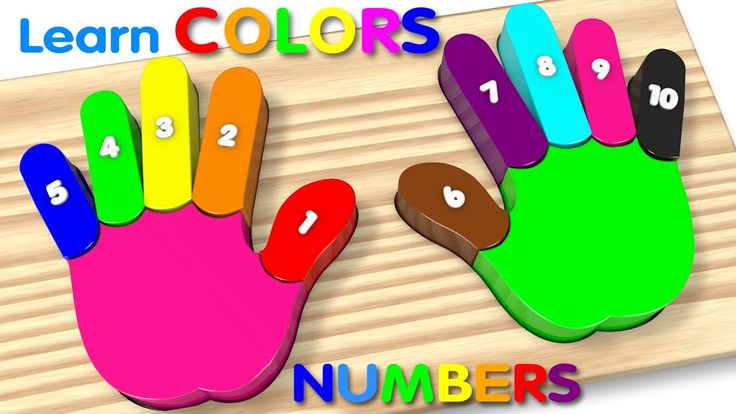 This can also lead to delays. For kids with any of these issues, try to avoid distractions and keep anxiety levels low by playing games or doing things to help your kids learn their colors.
This can also lead to delays. For kids with any of these issues, try to avoid distractions and keep anxiety levels low by playing games or doing things to help your kids learn their colors.
Learning the colors red and yellow
Learning the colors blue and green
Color blindness can also limit a child's ability to learn colors correctly. Colorblind people have trouble distinguishing between certain colors. Specific color problems can vary from person to person.
Learning the colors black and white
The degree to which color blindness affects someone can also vary greatly. The problem is exacerbated when multiple colors overlap, such as a red bow on a green shirt. If you have problems, it is best to see a doctor.
Different aspects of learning colors
In order to understand how to teach colors to toddlers, it is important to remember the different aspects of learning color. When your kids learn colors, it's more than memorization.